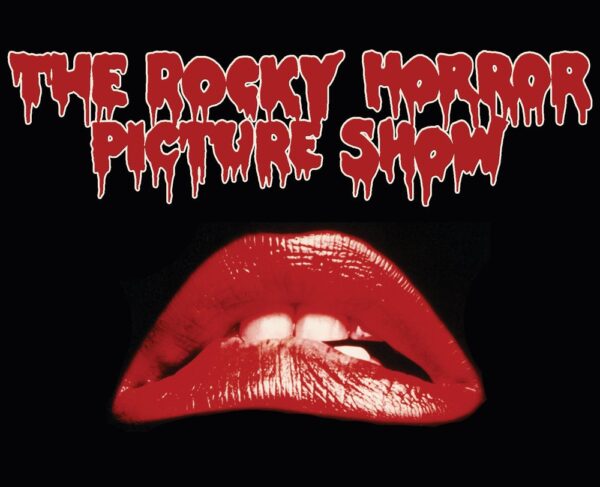It’s not unusual for movies and television shows to gain a group of rabid followers that we culturally deem a cult. Think of all the Comic-Cons – generally sprung from science fiction and fantasy such as Star Trek, Star Wars, the Harry Potter series, and the like – and that were so lovingly and gently skewered in the film Galaxy Quest. These productions (with the possible exception of the original Star Trek series) were all massively popular and often critically acclaimed during their initial release. Because of their broad popularity, they would properly be called cult favorites.
But what does one make of a film like The Rocky Horror Picture Show:

[Image from eastcentral.edu].
that was both a critical and financial flop on its initial release? When its devoted fans keep it alive long after that initial failure and bring it some measure of cultural prominence, you have not merely a cult favorite but a cult classic. And this is the status reasonably conferred on Somewhere in Time and particularly its annual Grand Hotel weekend (featuring a very different sort of dressing up than demanded by Rocky Horror or the typical Comic-Con). Different films take different routes on their way to becoming cult classics. In the case of Rocky Horror, it was driven by midnight showings in theatres where people in the LGBTQ community comprised most of the audience before they spread to the wider community.
Almost every aspect of Rocky Horror is flamboyantly and giddily over the top. The same can’t be said about SiT. Like any movie involving time travel, SiT requires an extra measure of suspended disbelief and a willingness not to question the anomalies created by the general premise. Beyond that, it’s unlikely that two movies could be more dissimilar than these. Yet both achieved a similar status. So, how exactly did SiT become a cult classic?
Laying the groundwork – the critics:.
As I noted above, before becoming a cult classic, a film has to fail both critically and at the box office so we’ll start with a look at what some of the era’s top critics said:.
Roger Ebert: “The movie surrounds its love story with such boring mumbo jumbo about time travel that we finally just don’t care.”
Kenneth Turan: “Sloppy where it should be sure, crudely drawn where it should be sensitive, careless around the edges with extraneous bits of business, the film takes the audience’s complicity for granted and loses its grasp in the process.”
Vincent Canby: “Somewhere in Time,” which does for time-travel what the Hindenburg did for dirigibles, was written by Richard Matheson, based on his novel, ”Bid Time Return”…”
Toronto Globe & Mail: “The manner in which the writer, Richard Matheson, and Jeannot Szwarc, in his glory days the director of Jaws II, conspire to tell the story should not only render the audience tearless, but speechless as well.”
You get the idea. Qualification one – critical failure – is easily met.
Laying the groundwork – the finances.
A general Hollywood rule of thumb is that a film needs to earn between two and two and a half times its budget to break even. With a budget of between $4 million and $5 million and an initial box office of $9,700,000, SiT was close to that break even point but clearly not a box office success despite the presence of Christopher Reeve who was coming off his triumph as Superman. But there were other factors at work, too.
First, just as there was in 2024, there was a Screen Actor’s Guild strike in 1980 that began shortly before the film’s release. This prevented its stars from promoting the film in any medium or even attending its premiere. Second, the producer and director, probably knowing that this type of romance was unlikely to receive a positive critical reception but that could likely have significant audience appeal, both pressed Universal for a limited release that would allow the film to build its audience through word of mouth. Universal opted instead for a broad release based on a pair of positive previews. Because of the lack of actor driven publicity, Universal’s plan failed and the film flopped.

[Image by Freepik .]
There you have it. The first pieces – being burned by the critics and flaming out at the box office – are in place. But not every movie that combines these two elements rises from these ashes. This means we have to ask what was it about SiT that brought it back from oblivion and how did it happen.
And then along came Jerry.
Universal Studios released Somewhere in Time on 3 October 1980. About three weeks later, the film’s theatrical run had ended. Fortunately for SiT, the Z Channel, California’s first pay cable television channel was still in its developmental stage and looking for material to fill its programming slots. Much as HBO would do in its early days, Jerry Harvey, the Z Channel’s programming director, was able to inexpensively acquire the rights to films that had failed at the box office. One of those films was Somewhere in Time.
A story in LA-ist, quotes SiT producer Stephen Deutsch (now Simon) as saying, “Jerry was in love with Somewhere in Time. Not only did he run it, sometimes he ran it twice in the same night. That started the ball. And then, HBO in their early days were not buying blockbusters because they couldn’t afford it. So, what did HBO program? Movies that hadn’t worked out well at the box office.”
The article goes on to state, “A Z Channel program guide shows Somewhere in Time showing 16 times in one summer week in 1981. It became one of their most popular movies.” This newfound popularity prompted Universal Studios to attempt an experiment with the film’s soundtrack. They licensed it to every cable channel possible to see if this strategy might impact the soundtrack’s sales.
Knowing the score.
I noted above that SiT‘s budget was between four and five million dollars. As the producers were looking for someone to compose the score, their leading lady Jane Seymour, who was taking on her first starring role, suggested John Barry. As Jane tells it, the producer’s reaction was something along the lines of, “We don’t have enough in our budget to even ask John Barry let alone hire him.” Here’s Seymour relating the story at one of the several reunion weekends she’s attended.
It was Barry who suggested the change from using Mahler’s Tenth Symphony (as Matheson does in the novel) to using the eighteenth variation from Rachmaninov’s Rhapsody on a Theme of Paganini.
Barry’s score, composed shortly after his father’s death is considered by many as among his best compositions. In part, using his own variations on Rachmaninov’s themes, he seems to have tapped a deep personal emotional core as the music soars expressing through every time and space a sad, moving, but ultimately uplifting place for these characters to share a love that would always stay forever and always.
Thus, it is with good reason, many people believe that Barry’s score significantly contributed to SiT‘s ultimate success. Universal’s plan worked. The boost from the cable tv airings generated so many requests at record stores that Universal pressed more than 500,000 copies of the soundtrack album. The RIAA Certified Platinum recording became Barry’s best selling soundtrack.
One more element remains to complete the resurrection of Somewhere in Time and I’ll examine that in the next post.
